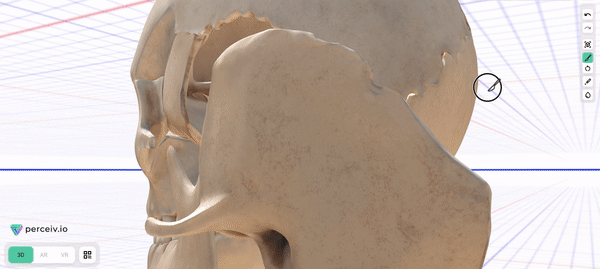Step into the Future of Education: The Mind-Blowing Classroom 3.0 Experience with AR, VR based 3D Interactive Kinesthetic Learning
Education is an ever-evolving industry, and with the rise of technological advancements, we are witnessing a new era of learning. Classroom 3.0 is the future of education that leverages technology to enhance the traditional classroom experience. In this blog post, we will discuss what Classroom 3.0 is and how it is shaping the future of education, with a particular focus on the role of augmented reality (AR), virtual reality (VR), 3D interactive, and kinesthetic-based learning.
What is Classroom 3.0?
Classroom 3.0 is a term used to describe the integration of technology in the classroom to create a personalized and interactive learning experience. This approach to education leverages the latest technological advancements to provide students with the opportunity to learn at their own pace, in their own way, and on their own time. The goal of Classroom 3.0 is to create a more engaging, collaborative, and student-centered learning environment that prepares students for the demands of the 21st century.
How is Classroom 3.0 different from traditional education?
Classroom 3.0 is different from traditional education in several ways. Firstly, it emphasizes the use of technology as a tool to enhance the learning experience, including technologies such as AR, VR, 3D interactive, and kinesthetic-based learning. These technologies offer a unique and immersive learning experience that goes beyond what traditional classroom settings can provide. For example, with AR and VR, students can explore different environments, such as historical sites, that they may not have the opportunity to visit in person. With 3D interactive and kinesthetic-based learning, students can engage in hands-on learning experiences that promote critical thinking and problem-solving skills.
Classroom 3.0 is designed to be more collaborative, with students working together on projects and assignments, rather than working individually. This promotes teamwork, communication, and critical thinking skills. Technology plays an essential role in enabling collaborative learning, with platforms such as Google Classroom, Zoom, and Microsoft Teams providing students with the opportunity to work together regardless of their location.
Classroom 3.0 is more personalized, with students able to learn at their own pace and in their own way. This means that students can focus on the areas they need to improve, rather than being held back by the pace of the rest of the class. With the help of technology, such as adaptive learning platforms, students can receive personalized feedback and support, helping them to achieve their full potential.
Why is Classroom 3.0 the future of education?
Classroom 3.0 is the future of education because it addresses the shortcomings of traditional education and leverages technology to provide a more engaging and effective learning experience. With the rise of technology, students are already accustomed to learning through digital mediums, and Classroom 3.0 builds on this familiarity to create a more immersive and interactive learning environment. Additionally, Classroom 3.0 promotes critical thinking, collaboration, and creativity, which are essential skills for success in the 21st century. By preparing students for the demands of the modern workplace, Classroom 3.0 ensures that they are ready to thrive in the workforce.

Conclusion Classroom 3.0 is the future of education, and it is transforming the way we teach and learn. By leveraging technology, promoting collaboration, and personalizing the learning experience, Classroom 3.0 is preparing students for success in the 21st century. AR, VR, 3D interactive, and kinesthetic-based learning play an essential role in this transformation, offering unique and immersive learning experiences that promote critical thinking, problem-solving, and creativity.
About Perceived:
Perceived is a leading research and development company based in India that specializes in human-computer interaction capabilities for education. Founded in 2019 by experienced engineers who have worked in prominent EdTech companies like Byju’s, Unacademy, and Edu-com, Perceived has quickly established itself as a rising star in the field of education technology.
Backed by leading EdTech incubators like AWS edstart and government institutes like IAMAI (K-tech) and IIIT-Bangalore, Perceived is dedicated to providing real-time experience and engaging, interactive learning experiences to students through the use of proprietary XR technologies and design vision.
As an award-winning company, Perceived has helped its clients successfully adopt the concept of real-time experience in classrooms by using prototypes that are not only engaging but also vividly convey how students will experience the product. With a strong focus on innovation, collaboration, and excellence, Perceived is poised to continue making valuable contributions to the field of education technology.

